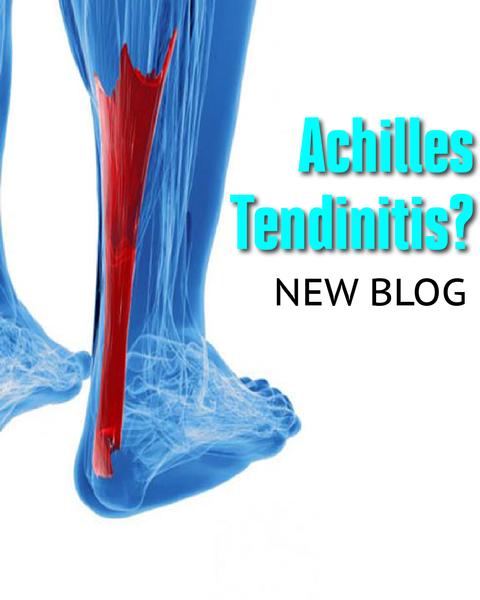Return To Blog
Achilles Tendinitis – How to avoid it and how to treat it if already developed
By Dr. Lucas Won, PT, DPT, CSCS - September 27, 2020
What is the achilles tendon?
Your achilles tendon is a band of tissue which attaches your gastrocnemius (calf) muscle to your heel bone. The achilles tendon is known to be the largest/longest tendon in the human body.
What is achilles tendinitis?
Achilles tendinitis is an overuse injury of the achilles tendon, most common in runners, leading to pain and inflammation near your heel bone and posterior lower leg. Middle-aged recreational athletes and “weekened warriors” are other populations typically prone to suffering from achilles tendinitis. However, achilles tendinitis can ultimately affect anybody.
Common causes include sudden increases in intensity/amount of exercise, tight calf muscles and bone spurring. Chronic tendinitis, if left untreated, can lead to micro-tearing of the tendon, leading to eventual rupture.
How do we avoid it?
How do we treat it?
A proper physical therapy evaluation/examination can help to diagnose, treat and ultimately diminish achilles tendinitis. Most physical therapy treatment will incorporate a combination of stretching, strengthening and modalities based on how you are presenting clinically.
Some common physical therapy treatments include:
Other forms of treatment can include wearing a night splint during sleep, wearing a heel lift in your shoes and wearing a walking boot to lessen the pressure on the achilles tendon during ambulation. Speak with your doctor and/or physical therapist regarding these other forms of treatment and if they believe you are an appropriate candidate.
Your achilles tendon is a band of tissue which attaches your gastrocnemius (calf) muscle to your heel bone. The achilles tendon is known to be the largest/longest tendon in the human body.
What is achilles tendinitis?
Achilles tendinitis is an overuse injury of the achilles tendon, most common in runners, leading to pain and inflammation near your heel bone and posterior lower leg. Middle-aged recreational athletes and “weekened warriors” are other populations typically prone to suffering from achilles tendinitis. However, achilles tendinitis can ultimately affect anybody.
Common causes include sudden increases in intensity/amount of exercise, tight calf muscles and bone spurring. Chronic tendinitis, if left untreated, can lead to micro-tearing of the tendon, leading to eventual rupture.
How do we avoid it?
- Gradually increase your activity level
- Stretch!
- Properly loading and strengthening your calf muscles
- Finding the right shoes for you
How do we treat it?
A proper physical therapy evaluation/examination can help to diagnose, treat and ultimately diminish achilles tendinitis. Most physical therapy treatment will incorporate a combination of stretching, strengthening and modalities based on how you are presenting clinically.
Some common physical therapy treatments include:
- Calf stretching (ie: runner’s stretch, slant board gastroc/soleus stretching, seated calf
- stretch using a strap/towel)
- Eccentric loading/strengthening of the gastrocnemius (ie: standing calf raises focusing on decreasing speed of movement on the downward portion of the calf raise)
- Balance training (ie: focusing on single leg stability and musculature surrounding the
- compromised area)
- Modalities (ie: ice, taping, cupping, dry needling, instrument-assisted soft tissue mobilization
Other forms of treatment can include wearing a night splint during sleep, wearing a heel lift in your shoes and wearing a walking boot to lessen the pressure on the achilles tendon during ambulation. Speak with your doctor and/or physical therapist regarding these other forms of treatment and if they believe you are an appropriate candidate.
